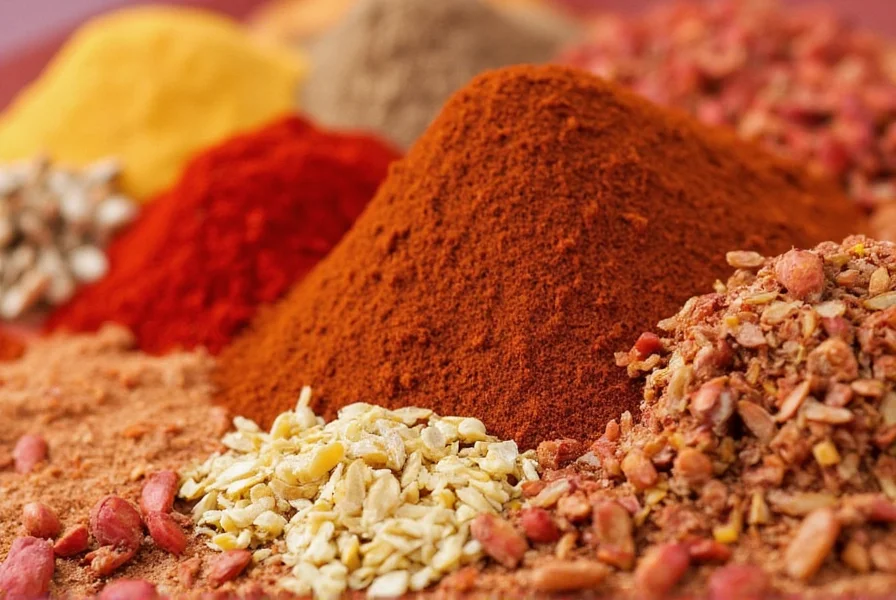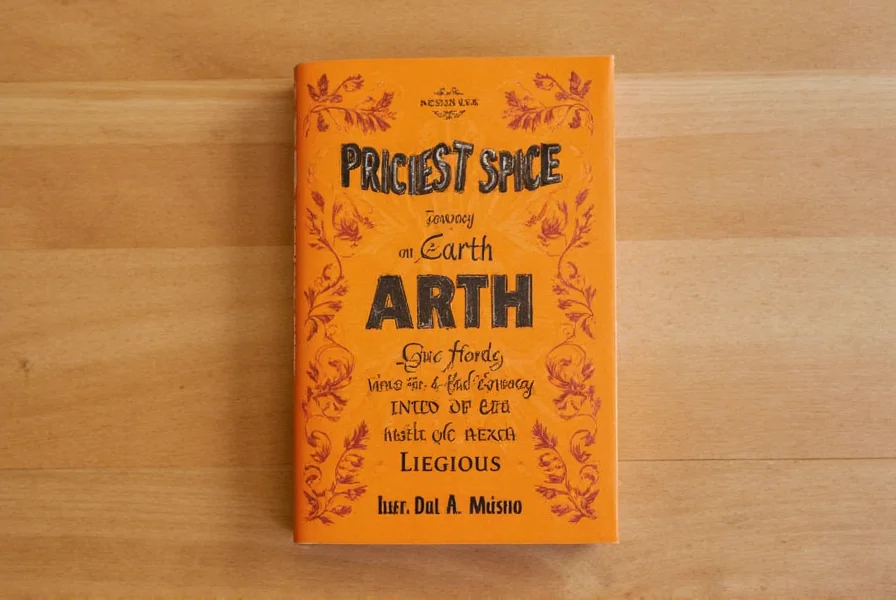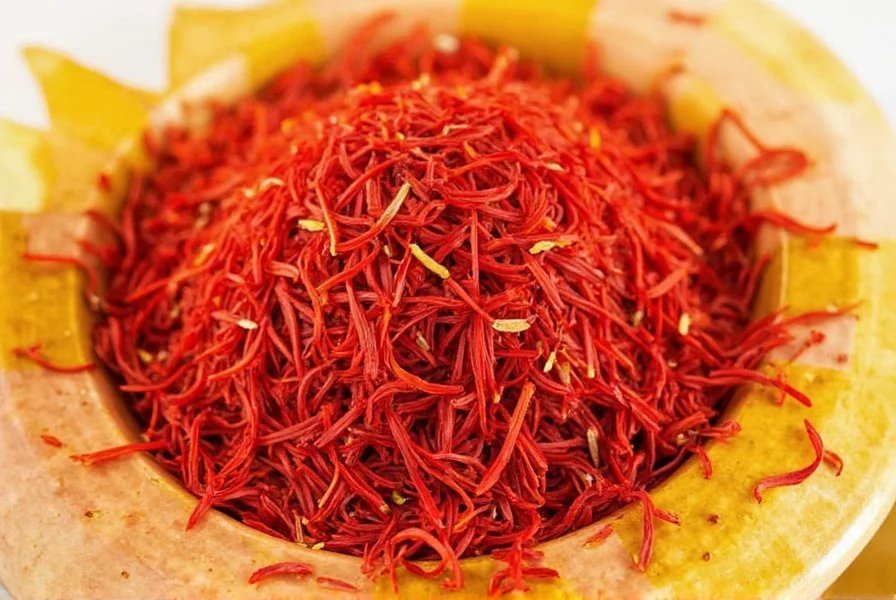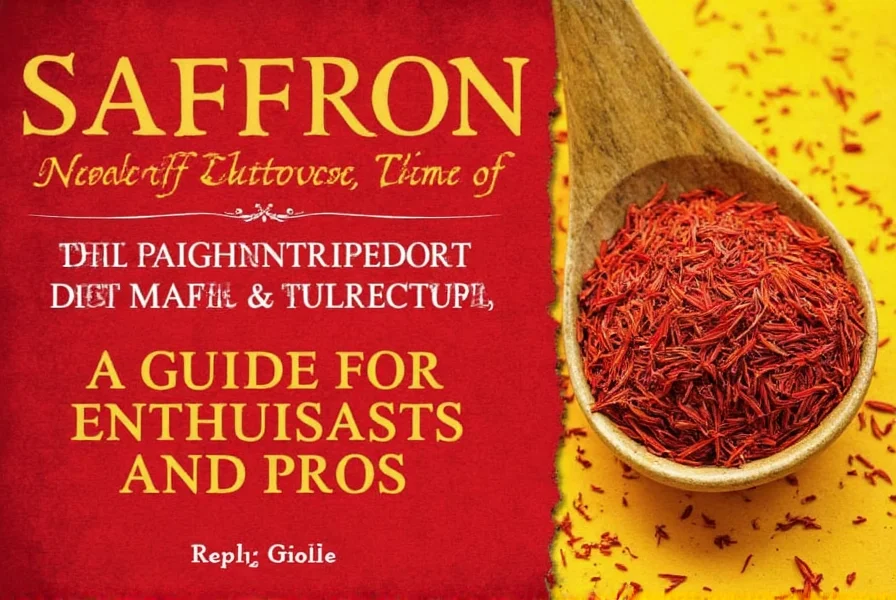Table of Contents
Introduction to Saffron
Saffron, derived from the stigmas of the Crocus sativus flower, is the world's most expensive spice by weight. This golden thread is prized for its unique flavor, vibrant color, and historical significance across Mediterranean, Middle Eastern, and Asian cuisines. Whether you're a home cook or professional chef, understanding saffron's proper use is essential for authentic culinary results.

Why Saffron is So Special
Saffron's uniqueness stems from several factors:
- Flavor Profile: A subtle, honey-like sweetness with earthy and floral notes that enhances dishes without overpowering them.
- Color Transformation: Just 1-2 threads can turn rice or sauces a vibrant golden yellow due to crocin compounds.
- Culinary Versatility: Used in both sweet and savory dishes across global cuisines, from Spanish paella to Indian kheer.
- Scientifically Backed Benefits: Studies published in the Journal of Affective Disorders and Phytotherapy Research confirm saffron's antioxidant properties and potential mood-enhancing effects when used in culinary quantities.
- Rarity: Each flower produces only 3 stigmas, requiring 75,000 flowers to yield 1 pound of saffron.

How to Use Saffron in Cooking
Proper preparation unlocks saffron's full potential. Follow these expert techniques:
- Soak Before Use: Place 10-15 threads in 2 tablespoons of warm liquid (water, broth, milk) for 15-30 minutes. This releases color and flavor compounds.
- Use Measured Amounts: For most recipes, 1/4 teaspoon (about 20 threads) is sufficient for 4 servings. Overuse creates bitterness.
- Add at Optimal Time: For rice dishes, add soaked saffron during the last 5-10 minutes of cooking. For soups and sauces, add in the final 2 minutes to preserve delicate aromatics.
- Pair Strategically: Complements seafood (especially shellfish), rice, dairy-based dishes, and baked goods. Avoid pairing with strong flavors like garlic or chili that mask saffron's subtlety.

Buying Guide: Choosing the Best Saffron
| Feature | Description |
|---|---|
| Color | Authentic saffron threads should be deep red with orange tips. Avoid uniform dark red (may be dyed) or brownish hues. |
| Smell | Should have a distinct honey-like floral aroma. Musty or chemical smells indicate poor quality or adulteration. |
| Texture | Threads must be dry, brittle, and snap easily. Damp or flexible threads indicate moisture damage. |
| Origin | Iran (Khorasan region) produces 90% of global saffron. Look for ISO 3632 certification for quality assurance. |
| Price | Genuine saffron costs $5-$20 per gram. If priced below $3/g, it's likely adulterated. |
Popular Saffron Varieties
- Persian Saffron (Iran): Highest quality with intense color and flavor. Ideal for paella and biryani.
- Spanish Azafrán: Milder flavor, often used in traditional Spanish dishes. Look for "Coupé" grade for premium quality.
- Indian Kesar: Sweet aroma, commonly used in desserts like kheer and lassi.
Where to Buy Safely
For authentic saffron:
- Specialty spice retailers with high turnover (check expiration dates)
- Reputable online sellers with third-party certifications (e.g., ISO 3632, USDA Organic)
- Avoid supermarket bulk bins where contamination is common
- Verify product labels include harvest year and country of origin
Cooking Tips with Saffron
1. Infuse Oils and Broths
Soak threads in 1/4 cup olive oil for 1 hour to create saffron-infused oil for drizzling over seafood or bread. For broths, add soaked threads during simmering to enhance soups and stews.
2. Perfect Saffron Rice
For 2 cups of basmati rice: Soak 15 threads in 2 tbsp warm water. Add to rice with cooking liquid 5 minutes before completion. Rest covered for 10 minutes for even color distribution.
3. Dessert Applications
Combine saffron with warm milk for rice pudding or ice cream bases. For cakes, mix soaked threads with sugar before adding to batter for even distribution.
4. Sauce Enhancement
Add saffron to béchamel or tomato-based sauces 2 minutes before serving. For creamy sauces, blend soaked threads directly into the mixture for smooth texture.
5. Tea and Beverages
Steep 5 threads in hot water for 5 minutes for saffron tea. Add honey and lemon for a refreshing drink. For cocktails, infuse threads in simple syrup for 2 hours before mixing.
Frequently Asked Questions
Is "safferon" the correct spelling of the spice?
No, the correct spelling is "saffron." "Safferon" is a common misspelling. The spice comes from the Crocus sativus flower and is properly spelled S-A-F-F-R-O-N. When searching for authentic saffron products, always use the correct spelling to find legitimate sources and avoid potential scams.
How can I verify if saffron is authentic and not adulterated?
Authentic saffron can be verified through several methods: place a few threads in warm water - genuine saffron will gradually release a golden-yellow color (not immediate red). It should have a distinctive floral, honey-like aroma, not chemical or musty smells. The threads should be deep red with orange tips, brittle to the touch, and never powdery unless specifically labeled as powder. Avoid products that seem too inexpensive, as real saffron cannot be cheap due to its labor-intensive harvesting process.
What's the difference between saffron and safflower?
Safflower is sometimes sold as "poor man's saffron" but is an entirely different plant. Saffron comes from crocus flowers and has a distinctive flavor, aroma, and coloring properties. Safflower is a different species that only provides color (no distinctive flavor) and is significantly cheaper. The two can be distinguished by taste (saffron has a unique flavor while safflower is bland) and by examining the threads (saffron has trumpet-shaped stigma ends while safflower has flat petals).
How should I store saffron to maintain its quality?
Store saffron in an airtight container away from light, heat, and moisture. The ideal storage is in a dark glass container in a cool pantry or cupboard. Properly stored, saffron threads can maintain their quality for 2-3 years, though they gradually lose potency. Never store saffron in the refrigerator as moisture can damage it. For longest shelf life, keep it in its original packaging until ready to use, then transfer to your airtight container.
What are common substitutes for saffron when it's unavailable?
While no substitute perfectly replicates saffron's unique flavor profile, turmeric can provide similar yellow coloring (use sparingly as it has a different flavor). For dishes where color is primary (like rice), a combination of turmeric and paprika can approximate the golden hue. Some chefs use a pinch of annatto seeds for coloring. However, these are only color substitutes - none provide saffron's distinctive aroma and taste. For authentic flavor, it's best to source real saffron, even if using smaller amounts.
Is it safe to consume saffron daily?
When used as a spice in culinary amounts (typically 15-30mg or 10-20 threads per dish), saffron is generally safe for most people. However, consuming extremely large quantities (5+ grams) can be toxic. For regular consumption beyond culinary use, consult with a healthcare provider, especially if pregnant, nursing, or taking medications. Some studies suggest benefits from saffron supplements, but these should be taken under professional guidance rather than self-prescribed.
Conclusion
Saffron is a culinary treasure that transforms ordinary dishes into extraordinary experiences. By understanding proper usage techniques, storage methods, and quality indicators, you can harness its unique properties to elevate your cooking. Remember: when it comes to saffron, quality matters more than quantity. A few carefully measured threads can deliver the perfect golden hue and delicate flavor that defines authentic saffron dishes worldwide.

For the best results, always purchase from reputable sources, store properly, and use measured amounts. With these practices, you'll experience saffron's true magic in every dish.











 浙公网安备
33010002000092号
浙公网安备
33010002000092号 浙B2-20120091-4
浙B2-20120091-4